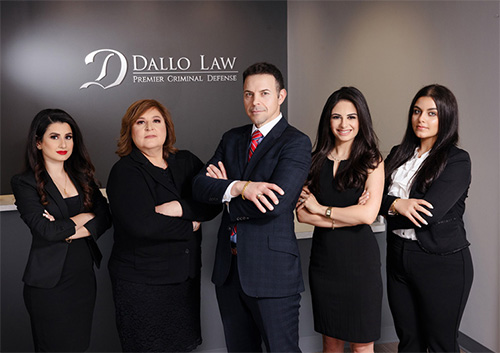Understanding Domestic Violence and Abusive Behavior
Domestic violence is a problem that affects people of all ages, genders, and ethnicities. Every minute in the United States, 20 to 24 people are subject to acts of domestic violence. Also commonly known as spousal or partner violence, it is a type of relationship violence. Despite the name, however, there doesn’t need to be a romantic or physically intimate relationship for it to have a negative effect. Children in households where a parent is subject to domestic abuse are also adversely affected.
Abuse Defined
A broad definition of abuse is the mistreatment of a person or group. While the first thing that may come to mind is physical violence, the mistreatment may also be emotional, psychological, sexual, or financial. In domestic violence, perpetrators often use abuse to control their victims. It can have severe and long-lasting effects on victims, including physical and emotional harm, trauma, and reduced quality of life.
- What is Domestic Abuse?
- Definitions of Abuse and Neglect: Abuse
- What is Abuse?
- Abuse
- Mental Health Information: What is Abuse?
Why Do People Abuse?
People become abusers for many reasons. Often, domestic violence stems from a person’s need for control. Some see the person they are in a relationship with as an extension of themselves and cannot respect their boundaries. Others, who were childhood abuse victims, may also continue the cycle as an adult and grow up to be abusers themselves. However, being a victim of abuse doesn’t mean a person will become an abuser, as some people would never dream of hurting someone they care for and choose to end the cycle. Some may also suffer from mental disorders, such as borderline and antisocial personality disorders, in which they enjoy inflicting or seeing people in pain. Even fear can make people abusive.
- Domestic Violence: Why Do People Abuse
- Why Do People Abuse Their Partners?
- Five Reasons People Abuse Their Partners
- Profile of an Abuser
- What is the Cycle of Violence
Why Do People Stay in Abusive Relationships?
It’s not uncommon for people to wonder why victims stay with their abusers. Unfortunately, there isn’t a simple or single answer to that question. Often, victims stay out of fear for themselves or others in the family, as abusers often threaten them with serious injury or death should they attempt to leave them.
Others may fear they have no financial resources or a safe place to go should they leave. This situation can be a serious fear for victims with a disability who depend on the abuser for significant care and support. Abusers may also isolate their victims by cutting them off from family and friends. By cutting them off, the abuser creates a sense of isolation that makes them feel alone and as if they have no one to support them.
While unwarranted, a sense of shame and guilt can also prevent a person from leaving. Someone who stays out of shame may feel embarrassed, thinking they are at fault or too weak. Abuse may also seem normal and even loving in the minds of those who have been victims of abuse or lived in an abusive household while growing up. In these cases, they may not recognize what a healthy relationship looks like.
- Helping and Healing: Why Victims Stay
- Domestic Violence: Reasons Why Battered Victims Stay With the Batterers
- Why Do Victims Stay With or Return to Abusers
- Why Do Domestic Violence Victims Stay
- Why Do People Stay in Abusive Relationships?
LGBTQ Abuse
Any member of the LGBTQ community can be a victim of domestic violence. For them, seeking help or leaving can often bring unique challenges associated with their gender identity or sexual orientation. Abused people who have yet to “come out” may fear being exposed by their abuser if they leave or go to the police. Because of their orientation or identity, they may fear a homophobic response from the police or other authorities that could lead to not being believed or treated fairly. Abusers may even use this fear, making the victims believe no one will help them should they seek it.
- LGBTQ Abuse
- Domestic Violence and the LGBTQ Community
- Can LGBTQ Experience Violence?
- Five Facts About Sexual and Domestic Violence in LGBTQ Communities
- Dating or Domestic Violence in the LGBT Community
Abuse and Immigrants
Immigrants who are victims of domestic abuse also face additional challenges stemming from their immigration status and lack of English skills. Limited family support and fear of deportation make them hesitant to report abuse or seek help. They may also be unfamiliar with the protections that are available for victims. For people living in the U.S. without proper documentation, calling for help and the risk of being detained can be more frightening than the abuse itself.
Abusers may actively use their victims’ immigration status to control and threaten them with deportation if they try to leave or seek help. Sometimes, abusive spouses who are U.S. citizens may threaten to withdraw their victims’ citizenship applications. Others may withhold passports, work permits, or other documentation as a type of control.
- Gender Based Violence Against Immigrant and Undocumented Women
- Immigrant Victims of Domestic Violence Face Issues with Little Help
- Violence Against Immigrant and Refugee Women
- Domestic Violence: Immigrants are Particularly Vulnerable
- The Facts on Immigrant Women and Domestic Violence (PDF)
What is a Healthy Relationship?
A majority of people want to have happy and healthy relationships. But some may not recognize exactly what this type of relationship entails, especially if they’ve never experienced it. A healthy relationship involves respect between all parties. Partners in a healthy relationship don’t abuse, threaten, or attempt to control or manipulate one another. When people treat one another with respect and trust, they can communicate freely without fear or threats.
- Healthy Relationship: Definition, Characteristics, and Tips
- Healthy Relationships: Definition, Why They’re Good for You, and How to Foster Them
- Healthy vs. Unhealthy Relationships
- Five Essentials for a Healthy Relationship
- Healthy, Unhealthy & Abusive Relationships
Additional Reading on Domestic Violence
- Abusive Behaviors: There are many different behaviors and tactics that some people use to abuse others. On this page, visitors will find a list of abusive behaviors with an explanation of how an abuser uses them.
- What is Domestic Violence?: People who want to understand more about domestic violence can click this link to the Center for Family Justice where they’ll find information about the characteristics of domestic abuse including physical, emotional, and financial abuse, as well as stalking and harassment.
- Domestic Violence and Abuse: This page on the HelpGuide website offers a comprehensive guide on the topic of domestic violence and abuse covering different forms of abuse, warning signs, and the cycle of violence. Visitors to the page will also find various resources.
- Domestic Violence Against Women. Recognize Patterns, Seek Help: Many women face the threat of domestic violence. Those that feel that they, or someone they know, is a victim of domestic violence can visit this page for a detailed breakdown of information, including recognizing domestic violence, how it impacts pregnancy and children, and not taking the blame. The page also provides valuable tips on creating a safety plan and where to find help.
- Dynamics of Domestic Violence: On this page, readers are given an overview of the different forms of abuse and the power and control dynamics associated with domestic abuse. The page also offers resources for victims and those who want to help.
- National Domestic Violence Hotline: Victims of domestic violence need a safe place to get help. The National Domestic Violence Hotline offers free and confidential assistance 24 hours a day, 7 days a week via phone, text, or chat. People who visit this site can also get information on local resources and how to plan for safety. If a loved one is being abused, the site offers valuable information on how to identify abuse and how to support others.
- The United States Department of Justice: Domestic Violence: On this page of the Office on Violence Against Women website, visitors are given phone numbers and guidance on how to get help. The page also features an explanation of what domestic violence is and descriptions of different forms of abuse.
- Dynamics of Domestic Violence: Learn about the two categories of domestic violence and why abusive behavior happens by clicking on this link to the Delaware Domestic Violence Coordinating Council page. The page also covers information such as the cycle of violence, power, and control techniques, and the effects on children
- Intimate Partner Violence: People experiencing intimate partner violence, and those who want to learn how to help, can click this link for a summary of what it is, the signs of abuse, and what to do. The page also includes a list of resources that provide more information.
- Intimate Partner Violence, Sexual Violence, and Stalking Among Men: While people most often associate domestic violence with women, men are also victims of abuse from a partner. This page on the Centers for Disease Control and Prevention has information to help people learn about violence against men and provides facts about intimate partner violence. The page also includes additional resources.
This page was last updated by Jalal J. Dallo










